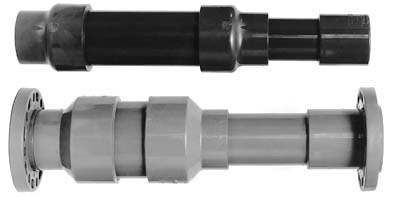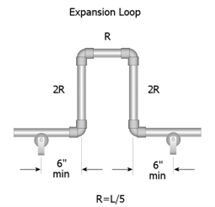Boltface
New Member
Warning: Extreme water softener novice here!
First - I'm on a well. Replaced the water heater about six years ago Old water heater was 25 years old and no problems other than two heater element replacements over those 25 years. After about three years on the new heater the lower element burned out, really nasty looking, cracked coming apart with lots of white stuff that I guess is calcium. I've now replaced that element probably four times. The 'calcium shells' as I call them are now up to the level of the heater element.
I used a water softener and neutralizer for about 20 years but as my second well(first well was dry from the start) was going dry I shut the water softener off. The new third well only yielded 0.4 gallons per minute and since I have no other place to drill another well I left the softener off.
The well is 400 feet deep and we've never run low on water but I want to make sure the softener I get is reliable in the sense that it doesn't fail in some way as to run threw my meager supply of water.
Back to the calcium shells. I assume I need a new water softener and since I can't flush the calcium shells out of the water heater I also need a new water heater. So I have this ancient softener(31 years old) which I think should be replaced, not sure about the neutralizer tank.
Info about water usage. Two adults and a 17 year old grandson who lives with us half time. Three bathrooms.
Just got a Hach 5B Hardness Test Kit. Sampled from a cold water line in the bathroom, 13 drops turned it blue. Tested the cold water in the kitchen and it was 14. I thought with all that calcium in the water heater that the hardness would be much higher.
Also one other fact. All this stuff - heater, softener, neutralizer is in the crawl space so the softener needs to be fairly short and easy to work on. The current softener is about 43" tall. To make that fit it's buried 3-4 inches in dirt and extends 1-1.5" above the bottom of the floor joists. The neutralizer tank is about 36" tall, partially buried and I have to put neutralizer in by the scoop.
So at last my questions:
- Does 14g hardness seem reasonable with all the calcium that is produced by the water heater?
- Will the softener get rid of the calcium in the water heater? I'm assuming the answer is yes.
- Should I replace the softener, neutralizer tank and the water heater?
- What brand softener do you suggest and is there one that is no taller than 43"?
- Is there any kind of maintenance that needs to be done on the softener requiring it to be opened up?
If you've managed to stay awake through this lengthy post you are to be commended!
Any help is much appreciated.
First - I'm on a well. Replaced the water heater about six years ago Old water heater was 25 years old and no problems other than two heater element replacements over those 25 years. After about three years on the new heater the lower element burned out, really nasty looking, cracked coming apart with lots of white stuff that I guess is calcium. I've now replaced that element probably four times. The 'calcium shells' as I call them are now up to the level of the heater element.
I used a water softener and neutralizer for about 20 years but as my second well(first well was dry from the start) was going dry I shut the water softener off. The new third well only yielded 0.4 gallons per minute and since I have no other place to drill another well I left the softener off.
The well is 400 feet deep and we've never run low on water but I want to make sure the softener I get is reliable in the sense that it doesn't fail in some way as to run threw my meager supply of water.
Back to the calcium shells. I assume I need a new water softener and since I can't flush the calcium shells out of the water heater I also need a new water heater. So I have this ancient softener(31 years old) which I think should be replaced, not sure about the neutralizer tank.
Info about water usage. Two adults and a 17 year old grandson who lives with us half time. Three bathrooms.
Just got a Hach 5B Hardness Test Kit. Sampled from a cold water line in the bathroom, 13 drops turned it blue. Tested the cold water in the kitchen and it was 14. I thought with all that calcium in the water heater that the hardness would be much higher.
Also one other fact. All this stuff - heater, softener, neutralizer is in the crawl space so the softener needs to be fairly short and easy to work on. The current softener is about 43" tall. To make that fit it's buried 3-4 inches in dirt and extends 1-1.5" above the bottom of the floor joists. The neutralizer tank is about 36" tall, partially buried and I have to put neutralizer in by the scoop.
So at last my questions:
- Does 14g hardness seem reasonable with all the calcium that is produced by the water heater?
- Will the softener get rid of the calcium in the water heater? I'm assuming the answer is yes.
- Should I replace the softener, neutralizer tank and the water heater?
- What brand softener do you suggest and is there one that is no taller than 43"?
- Is there any kind of maintenance that needs to be done on the softener requiring it to be opened up?
If you've managed to stay awake through this lengthy post you are to be commended!
Any help is much appreciated.


